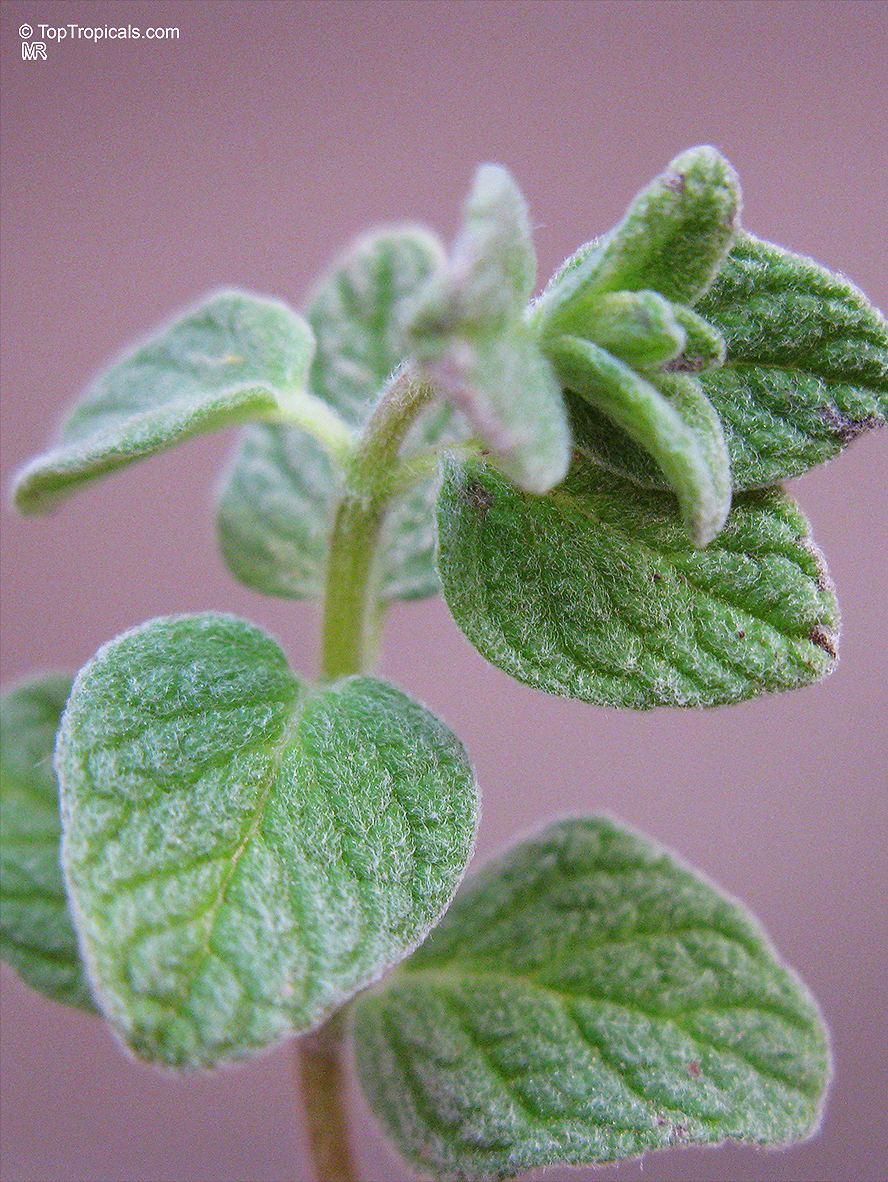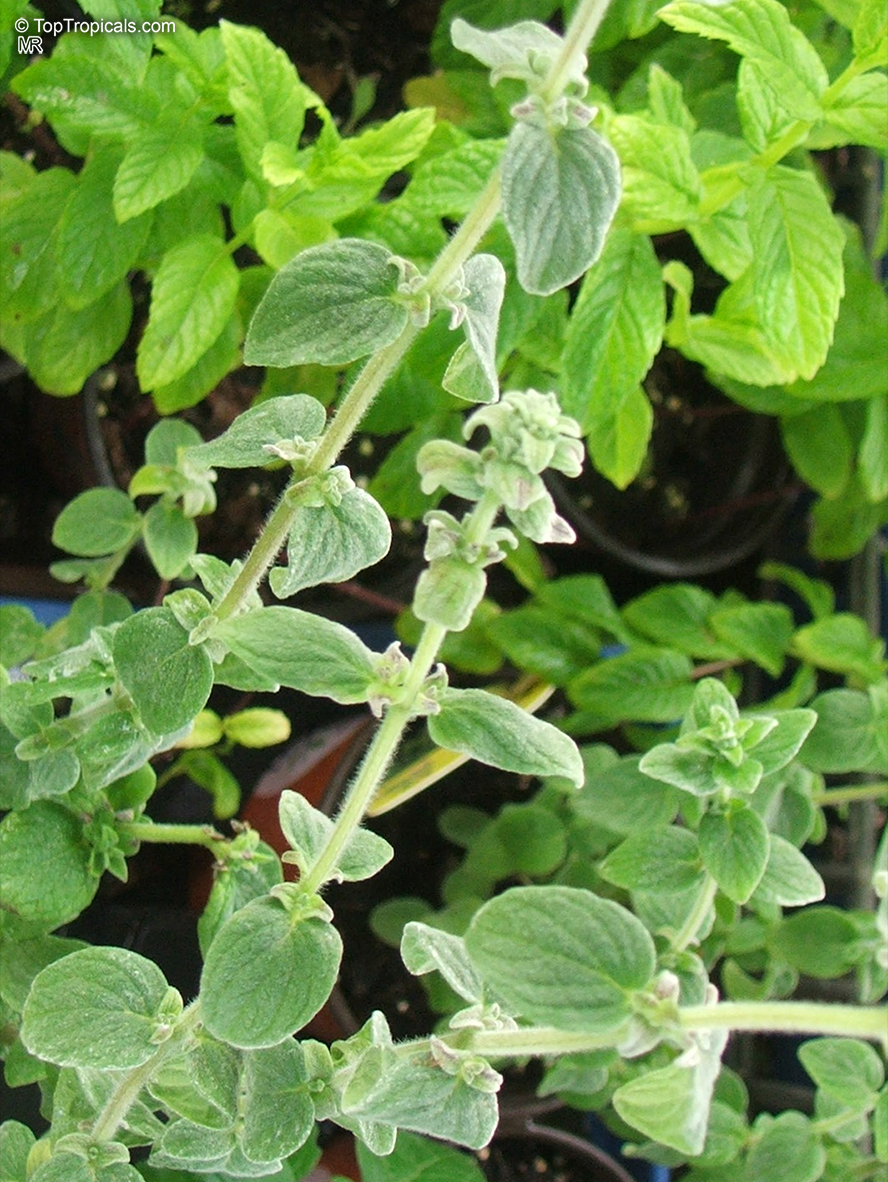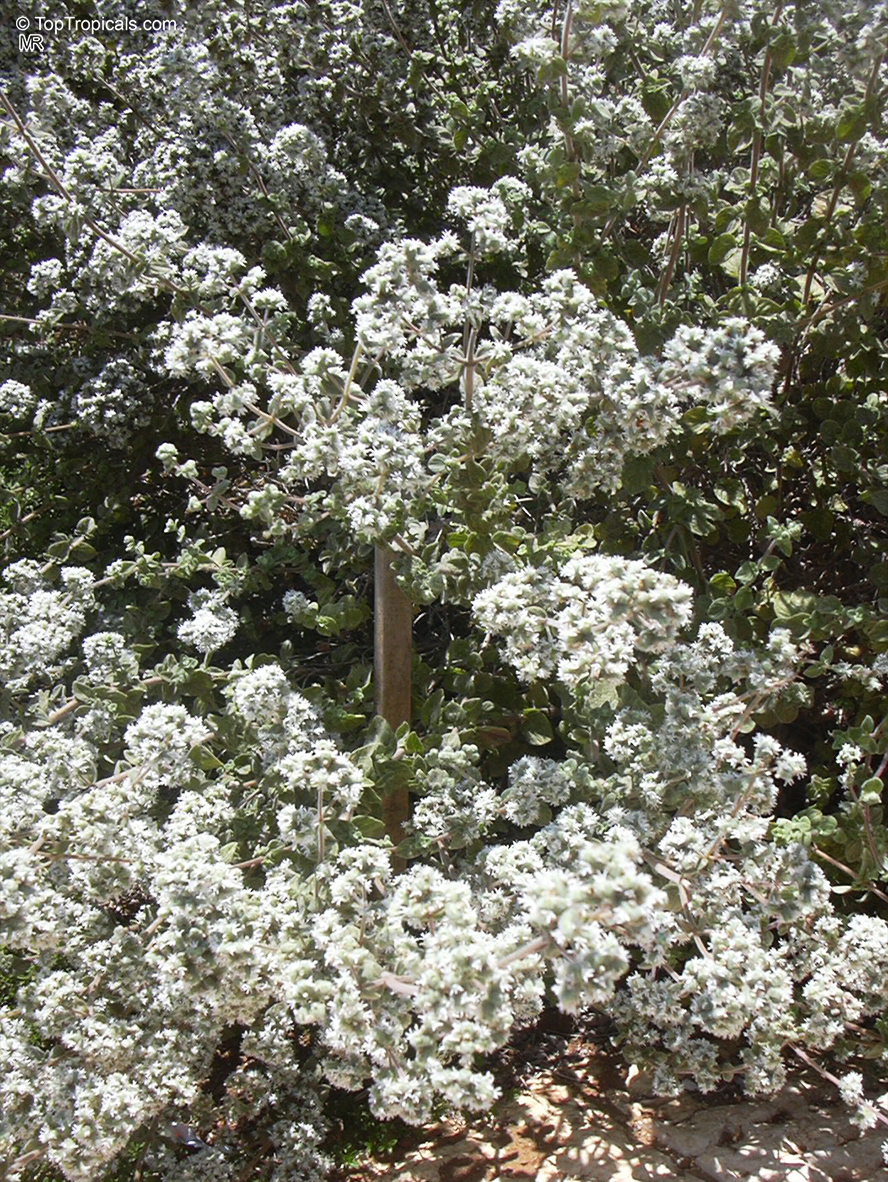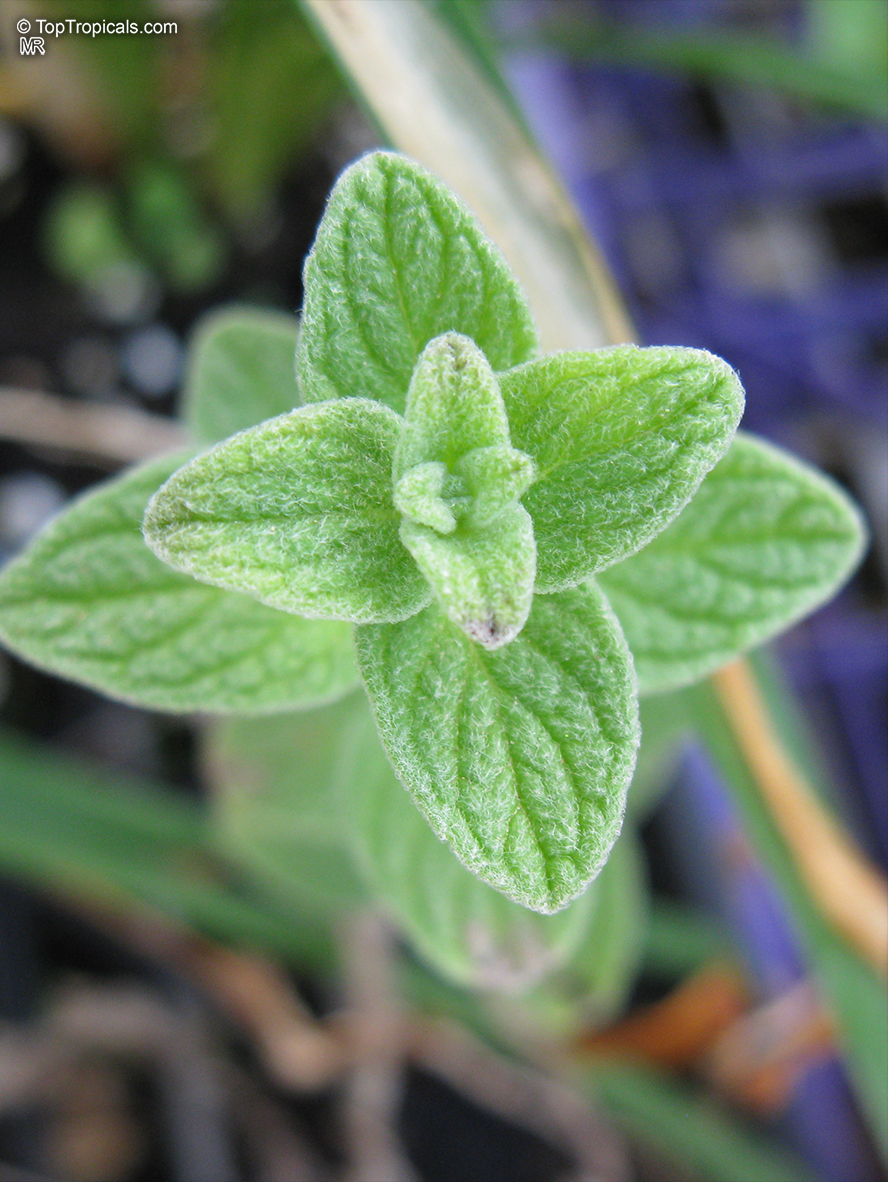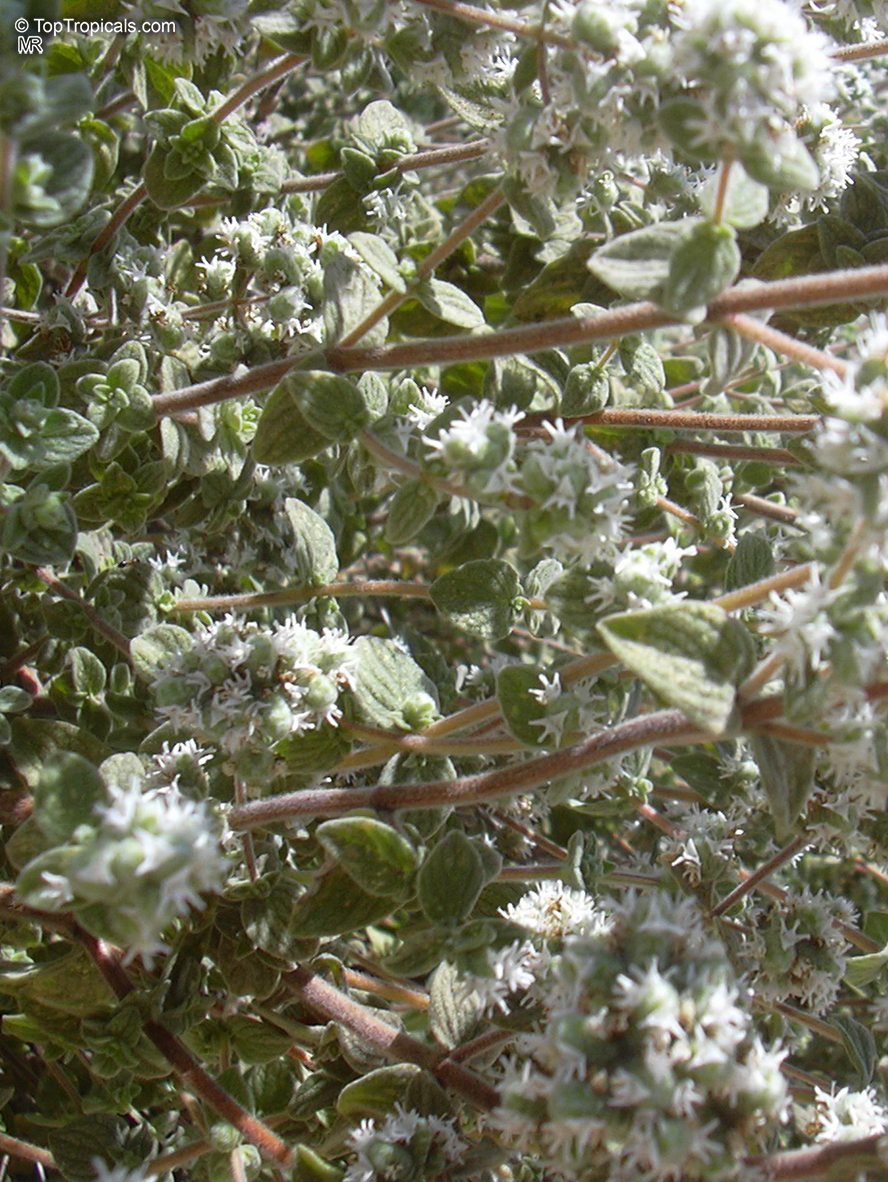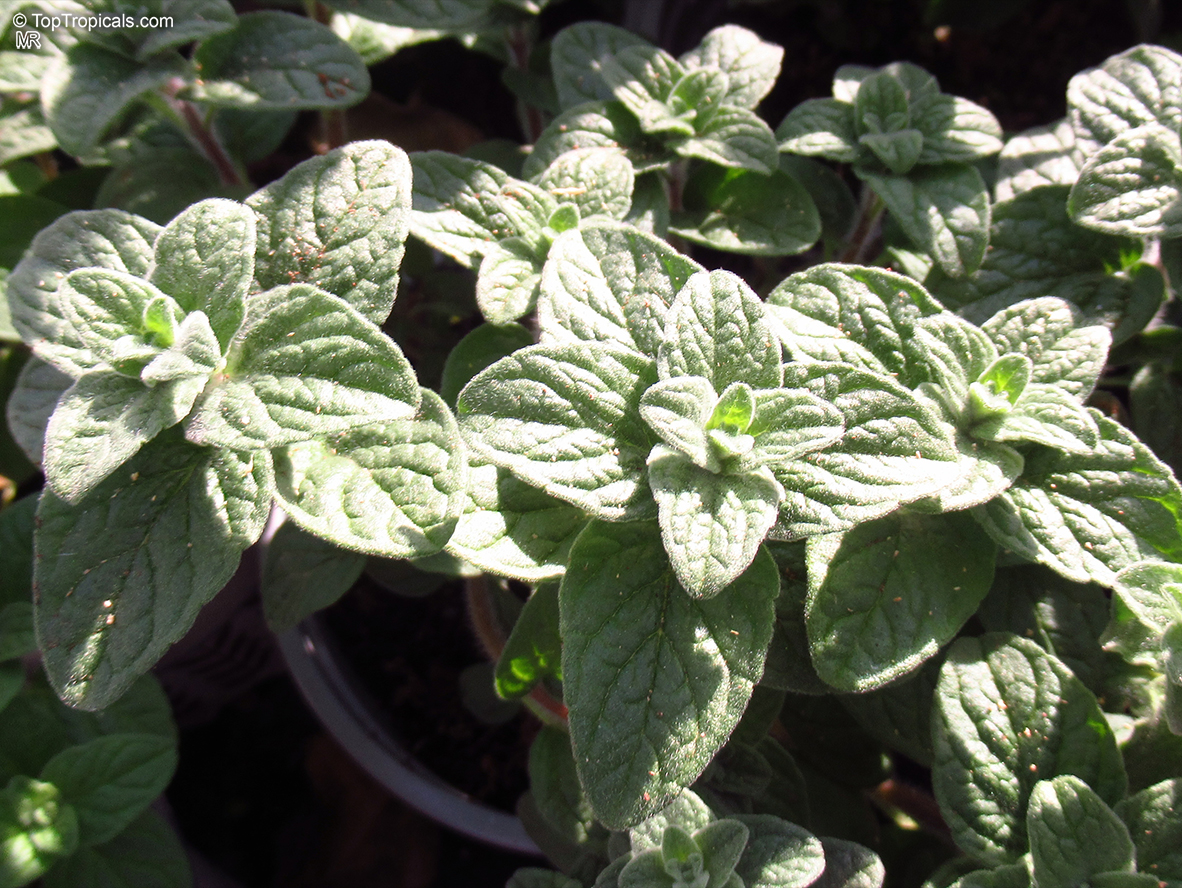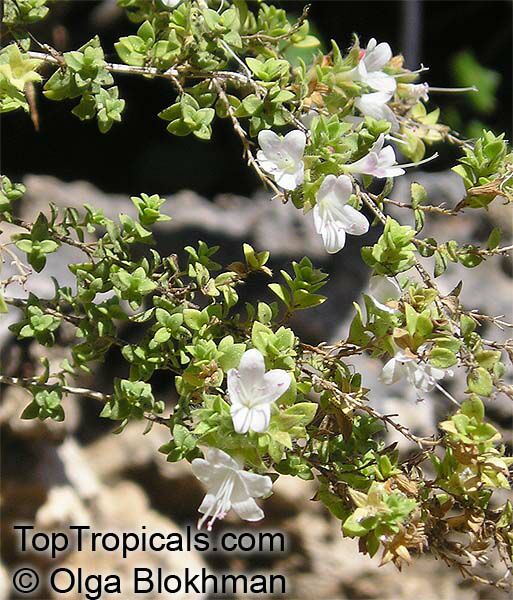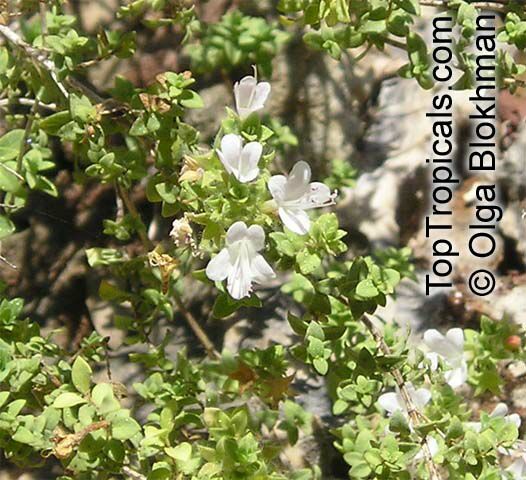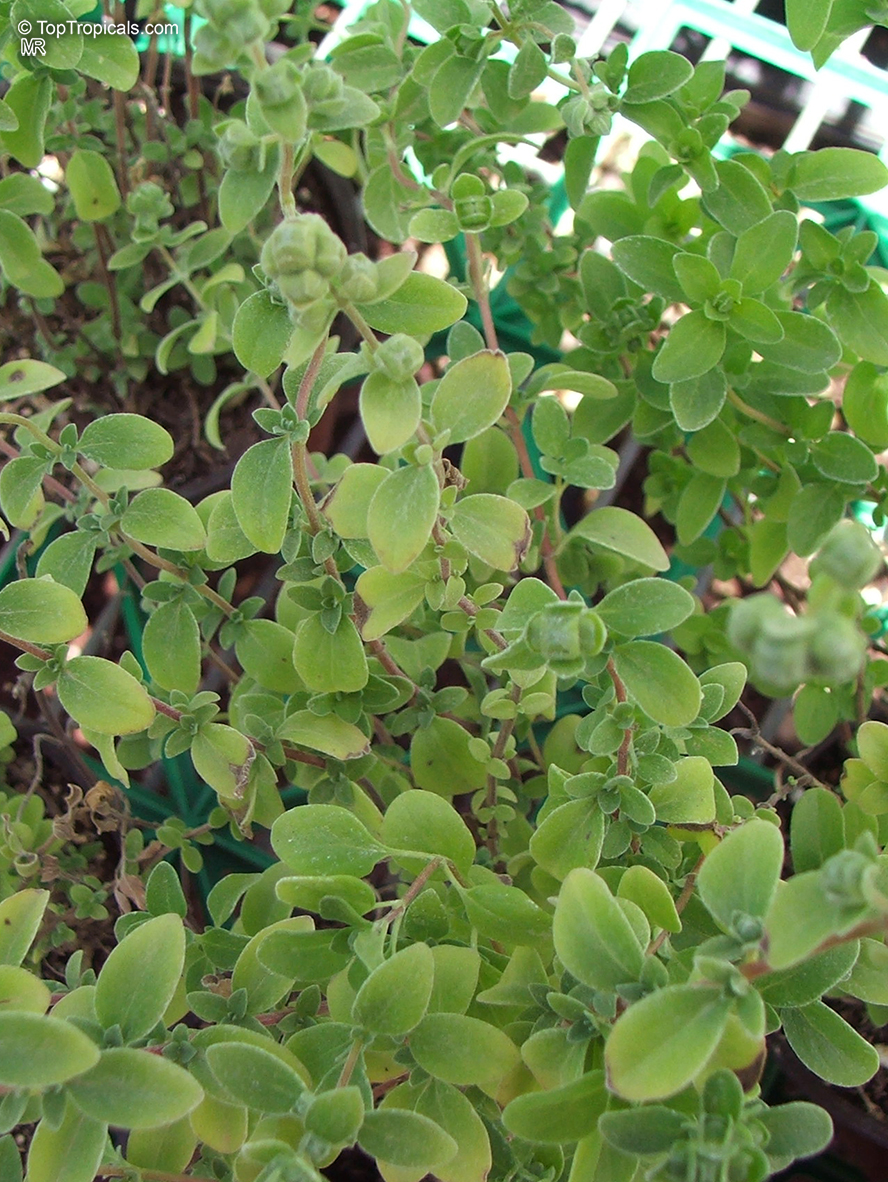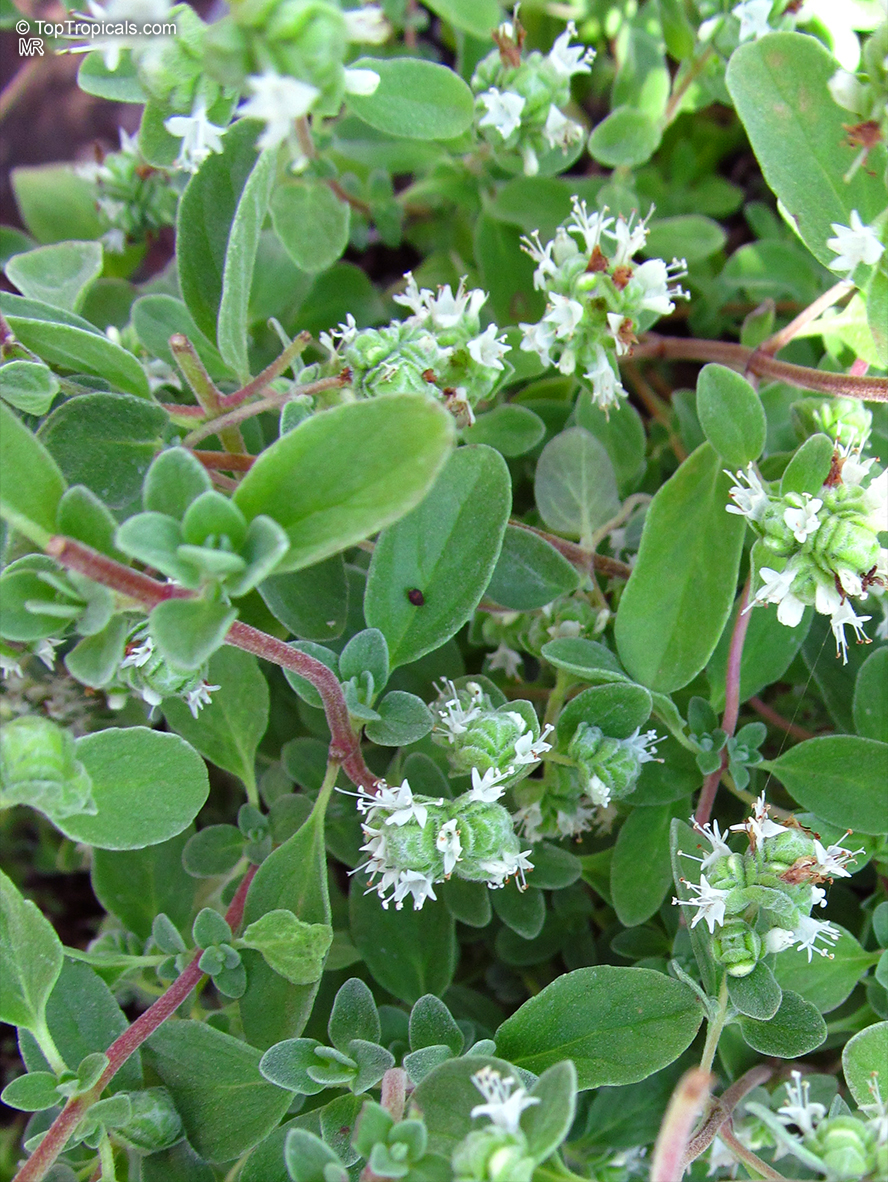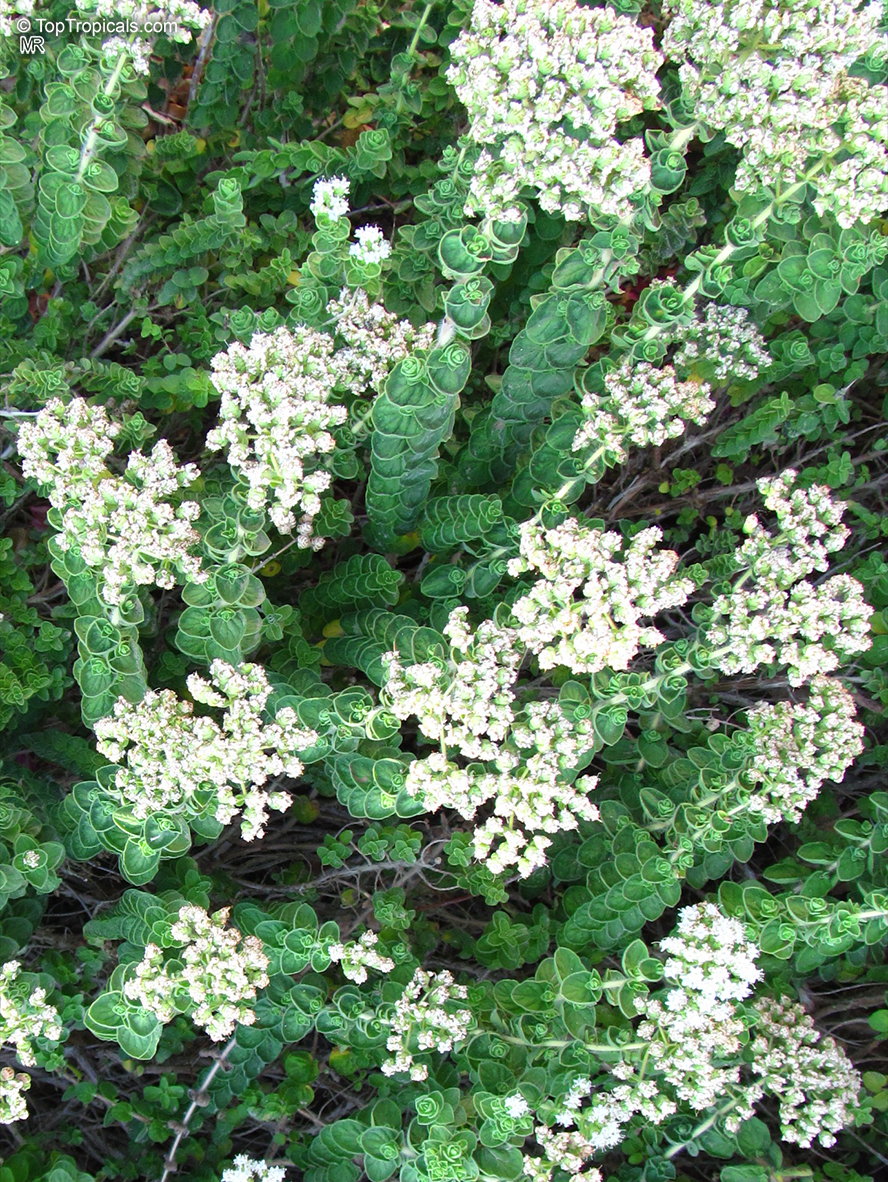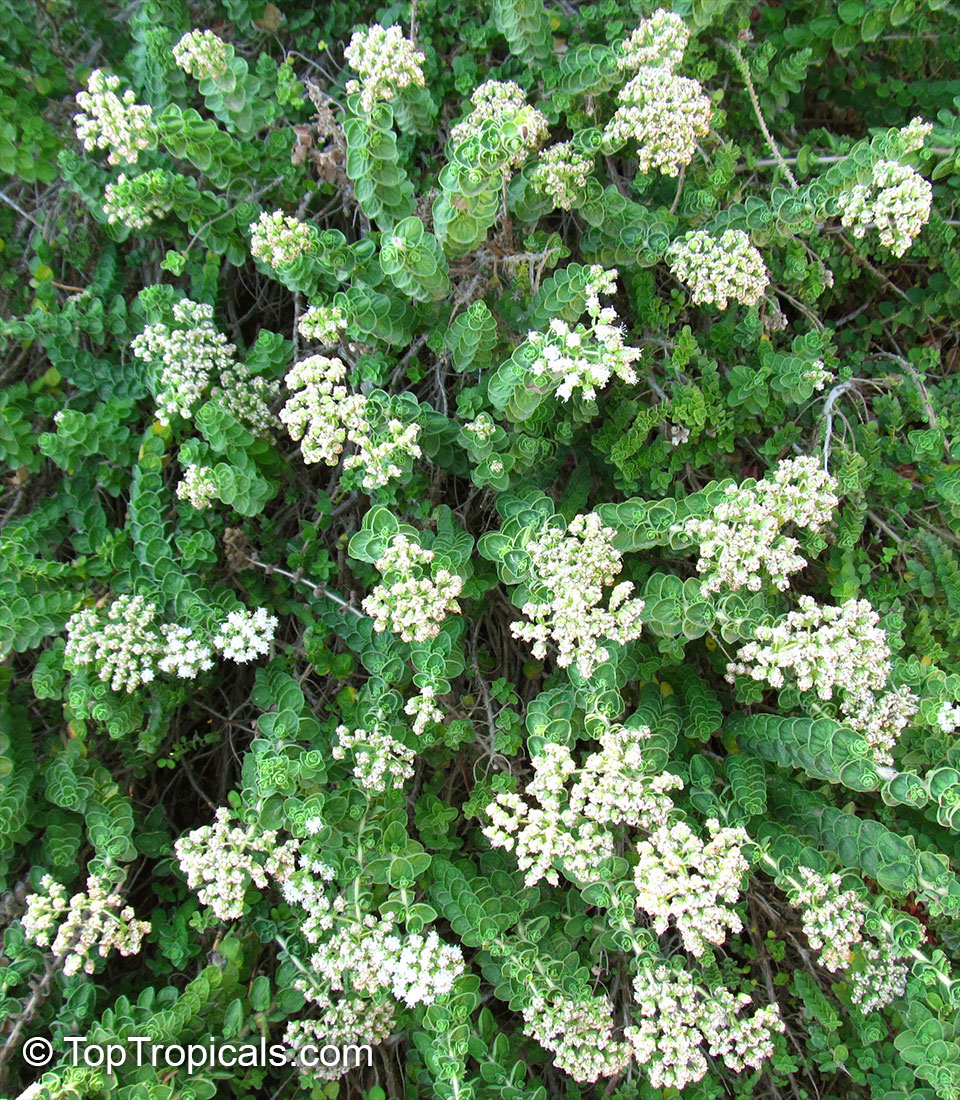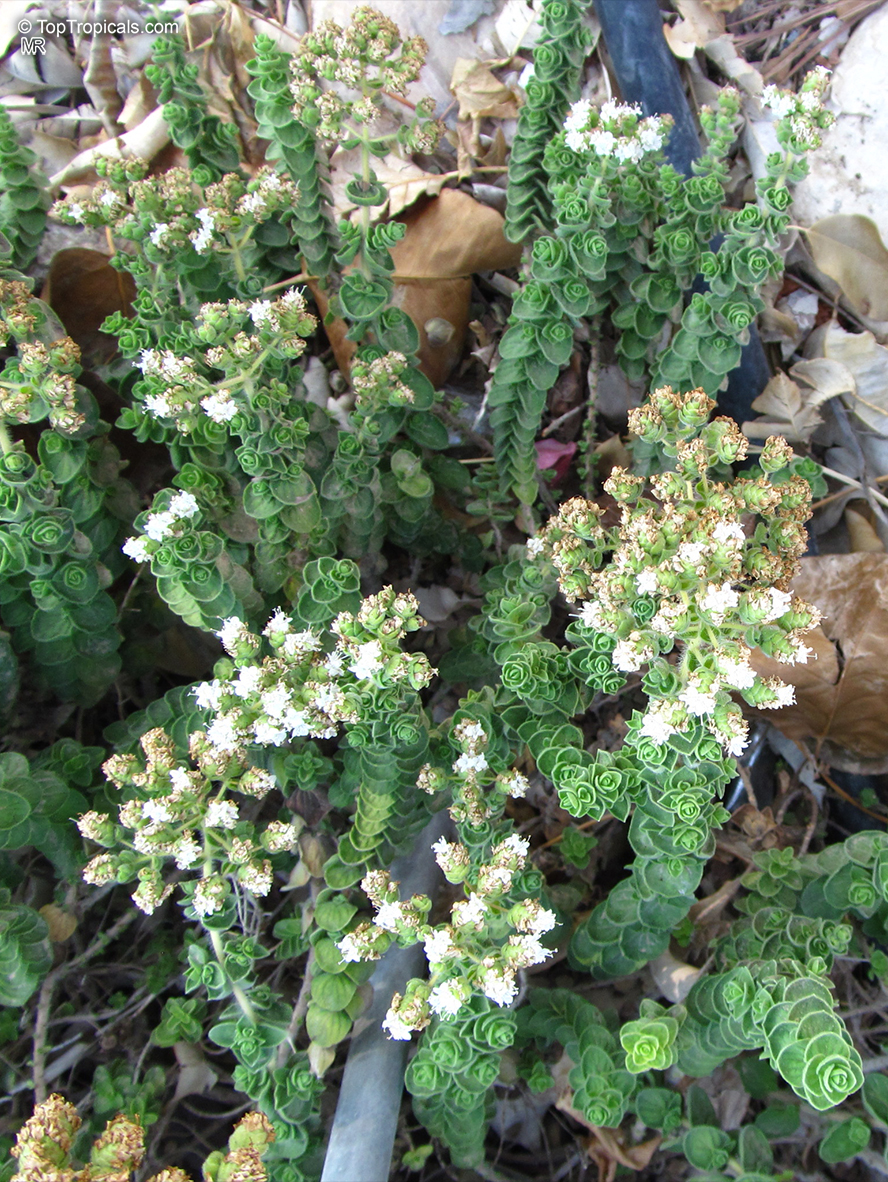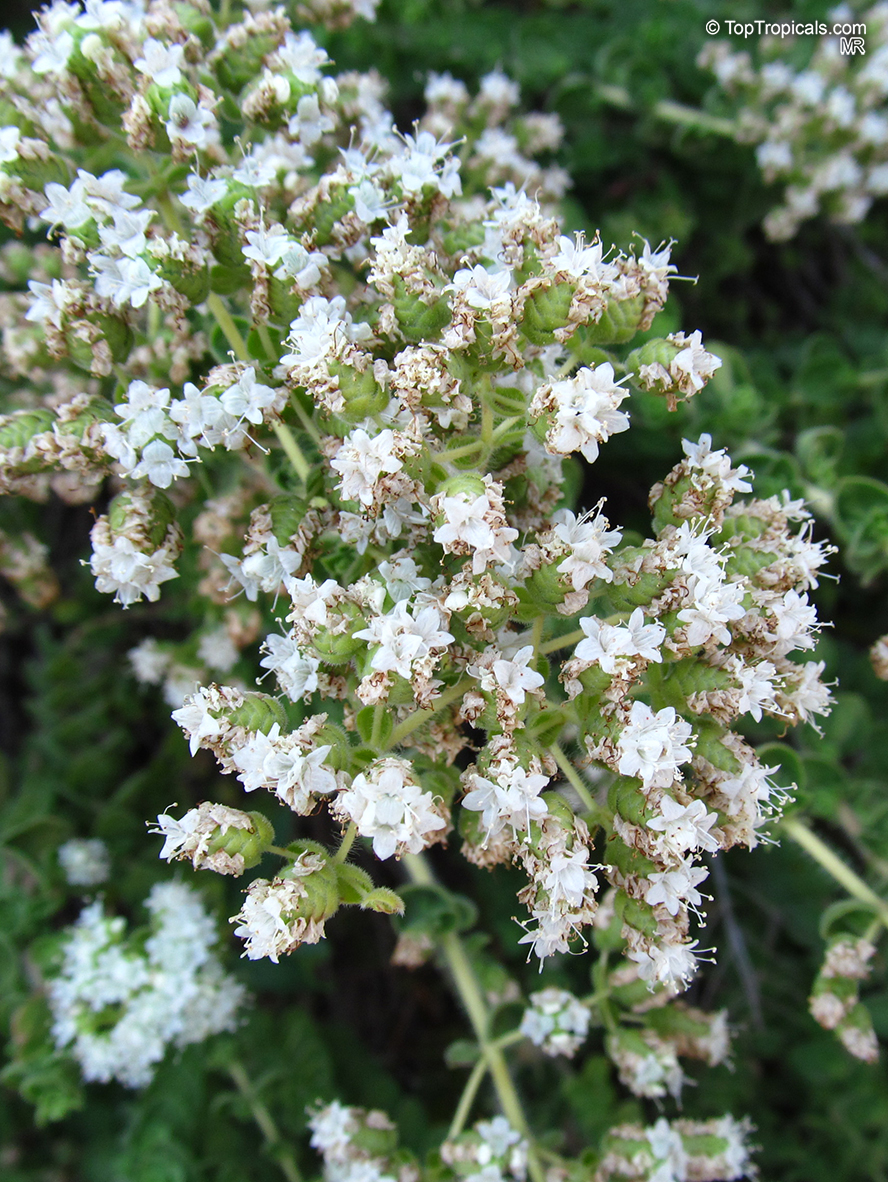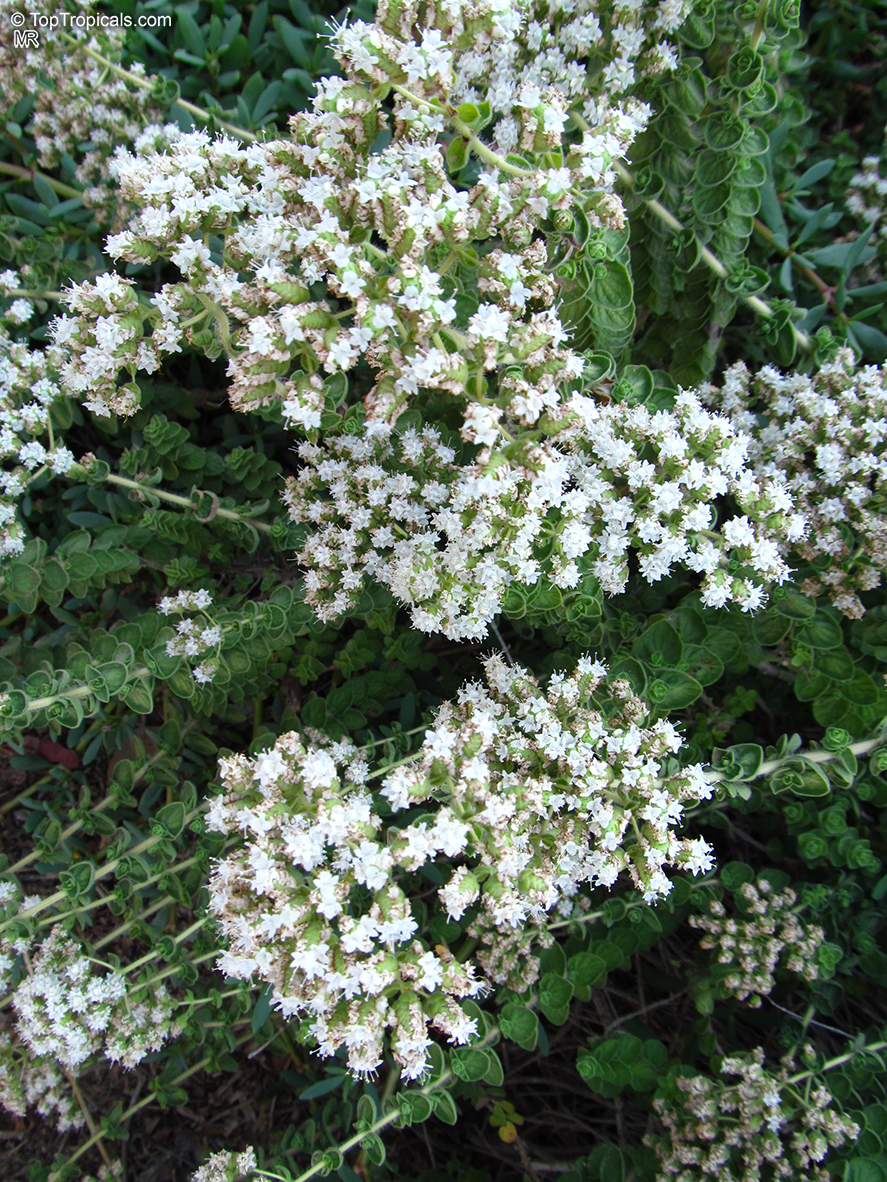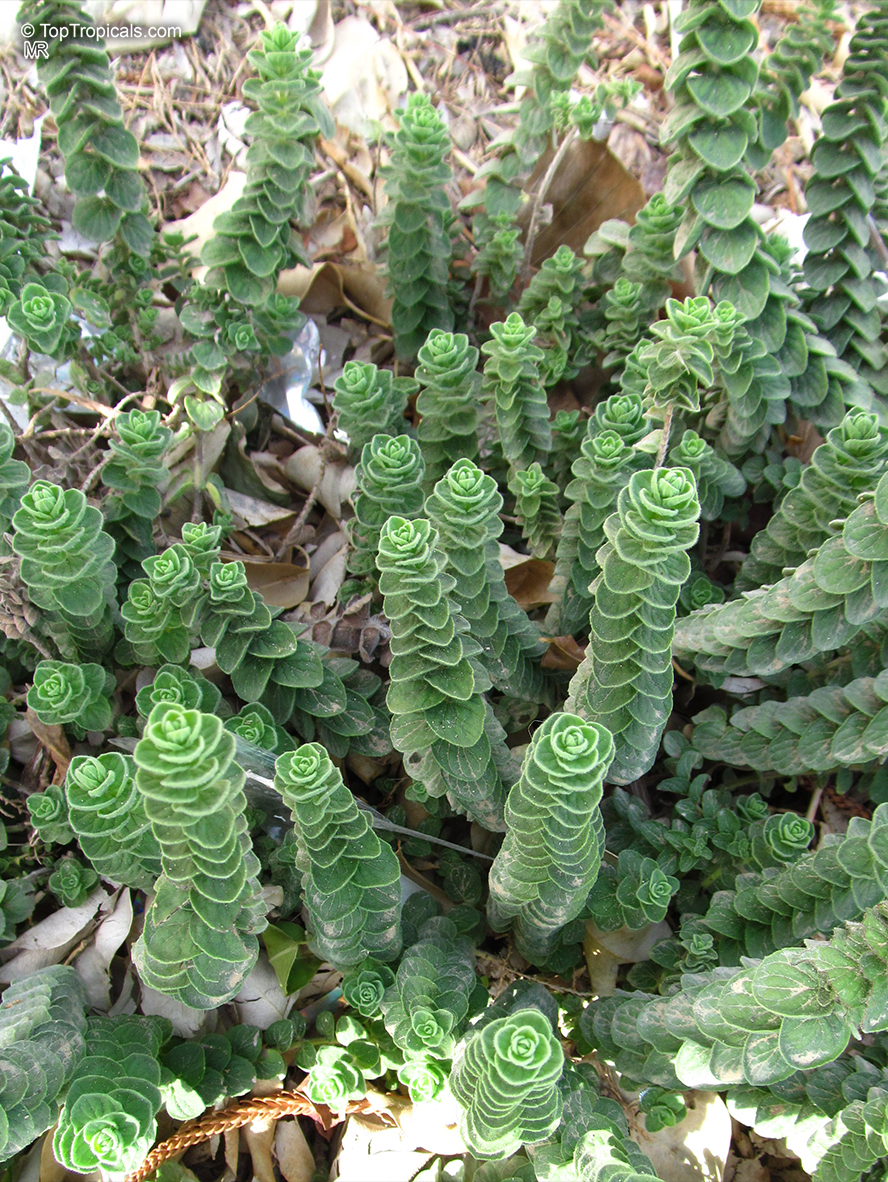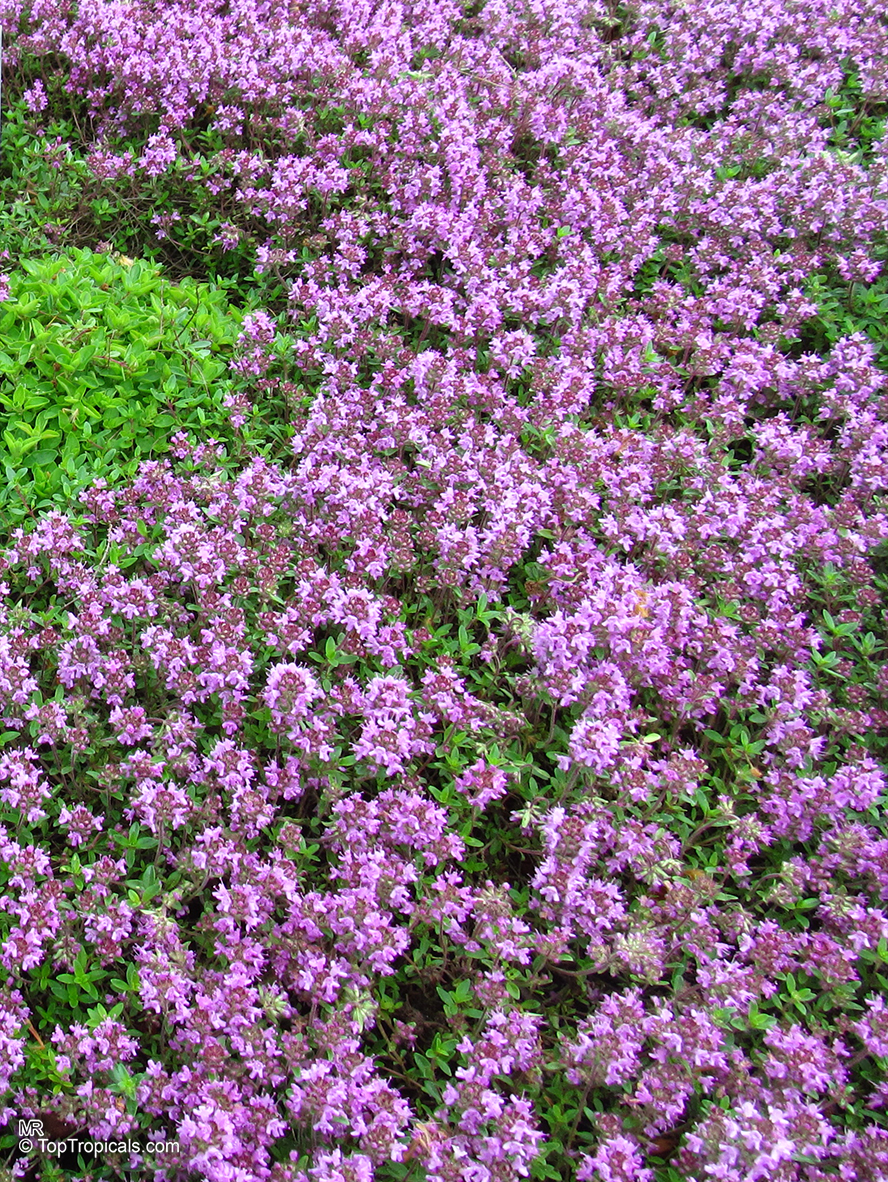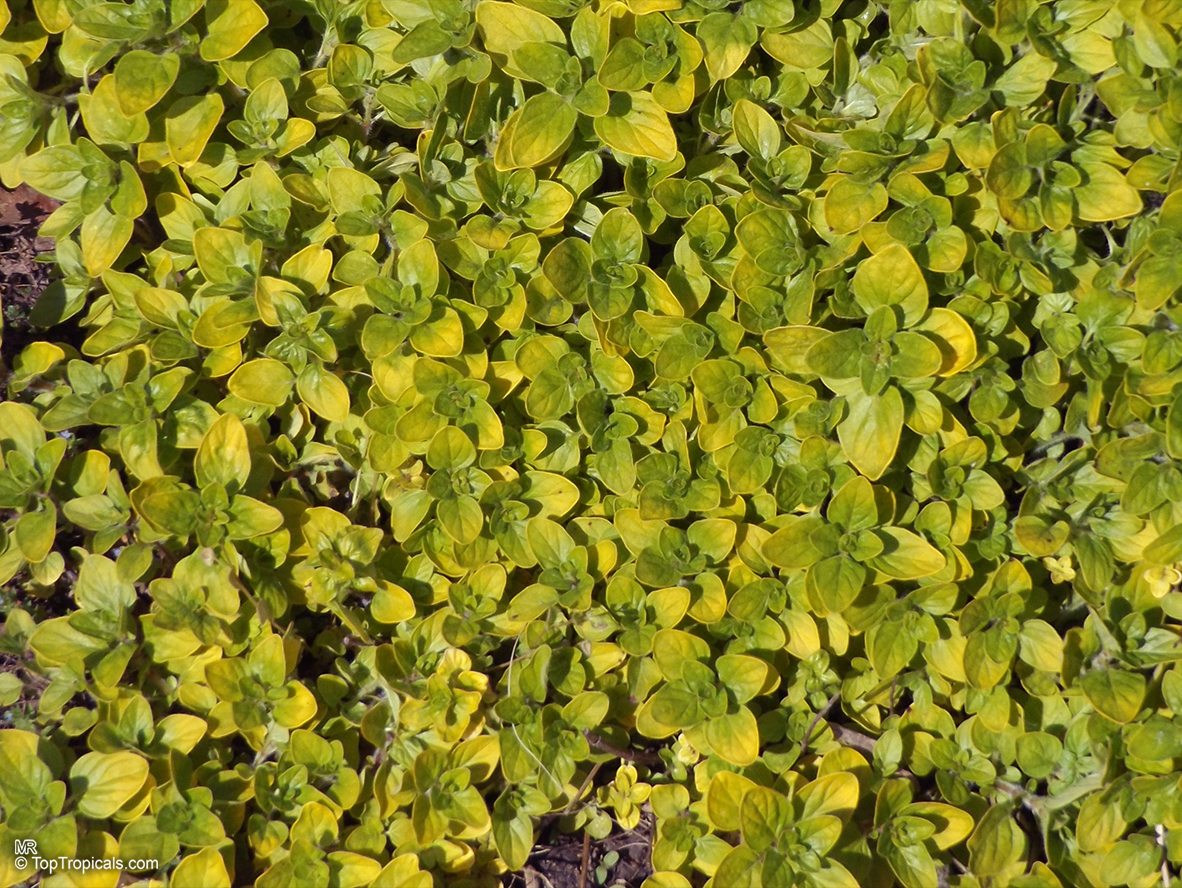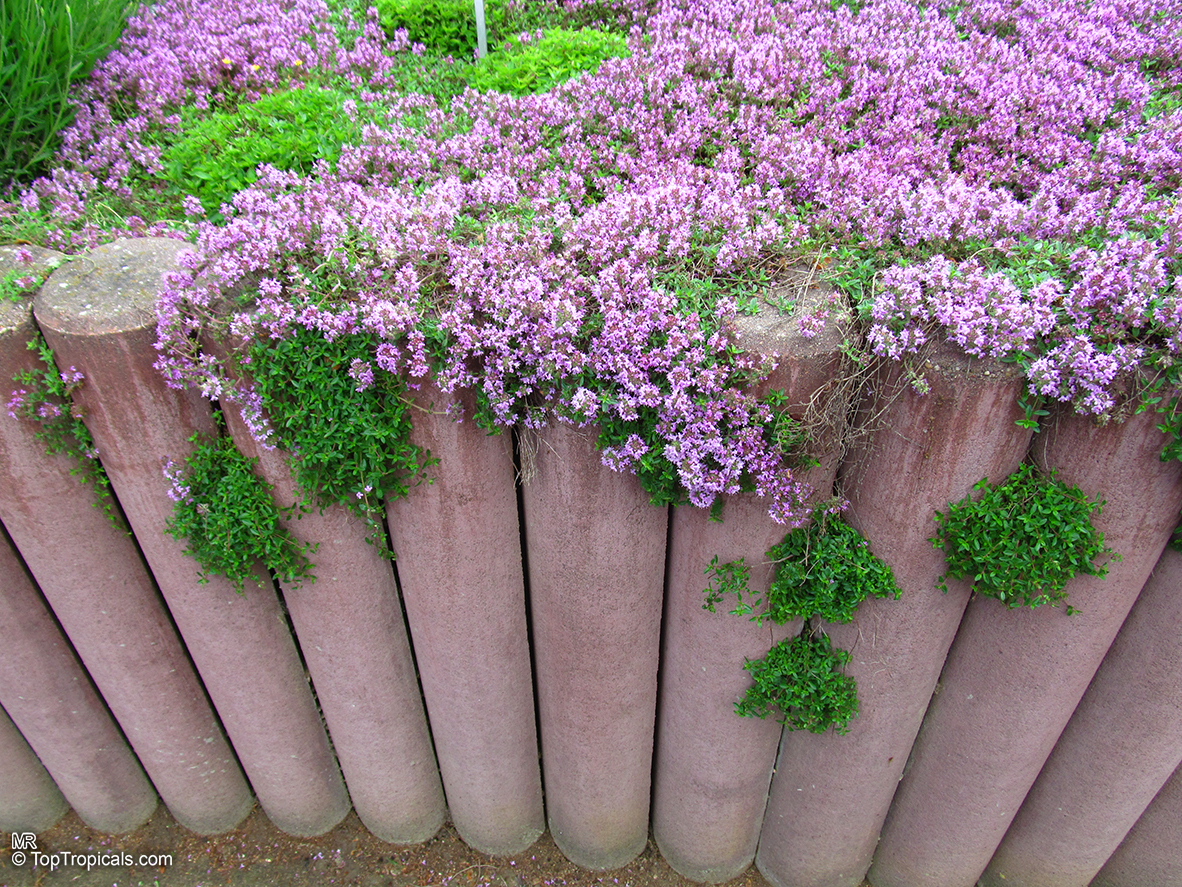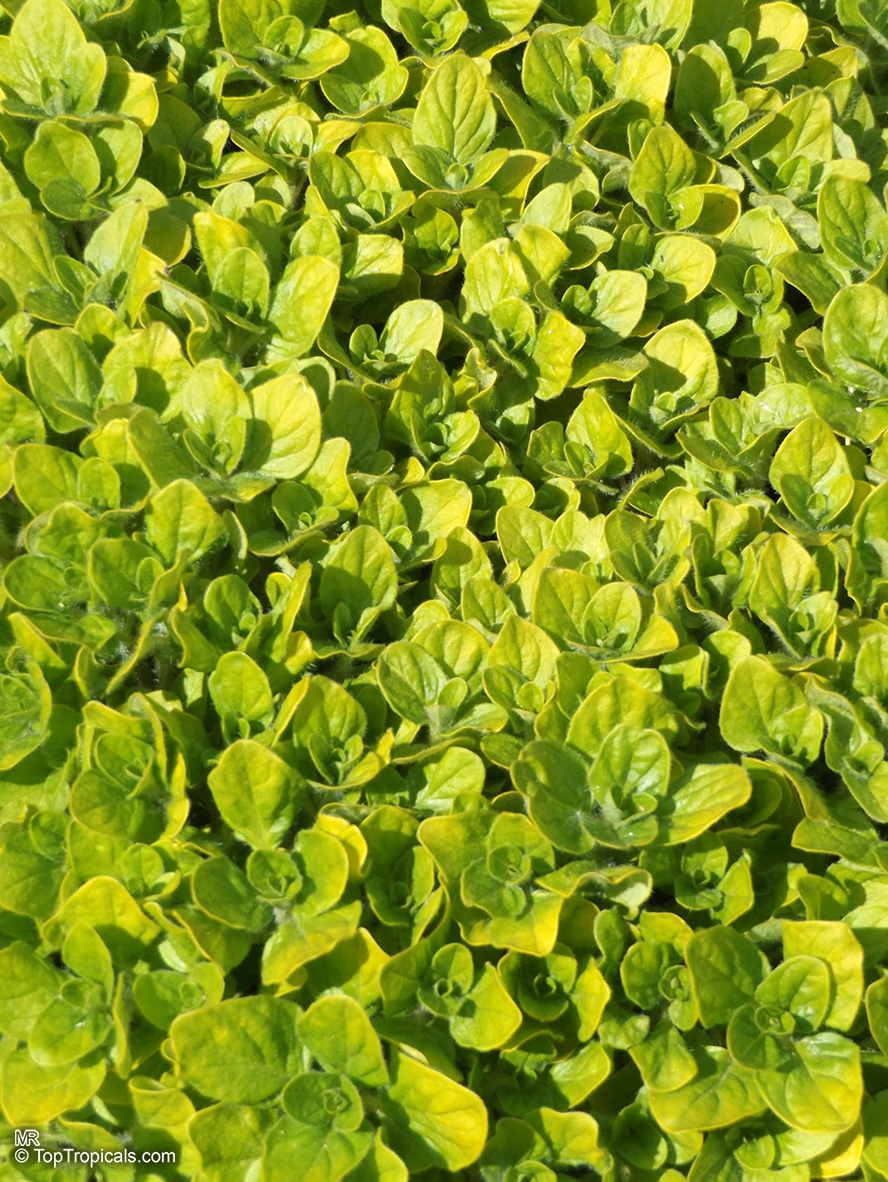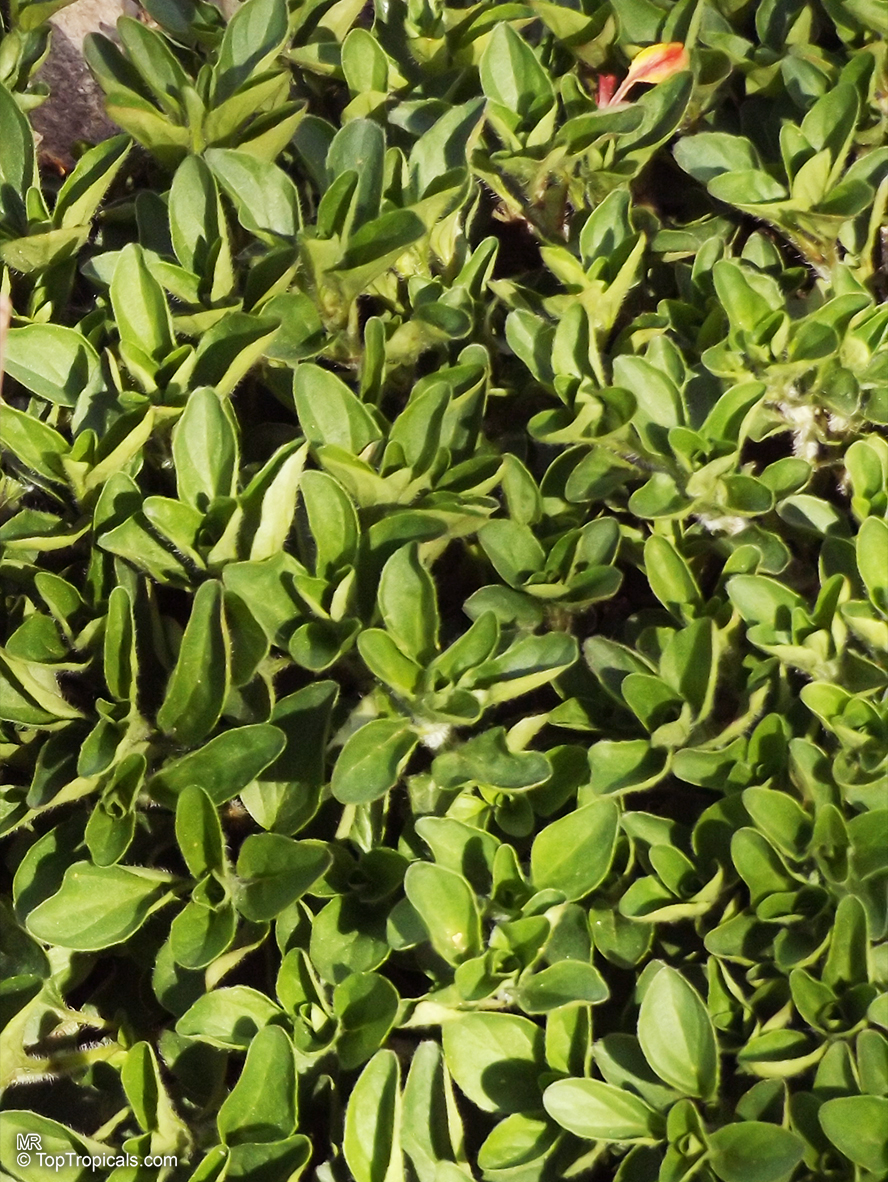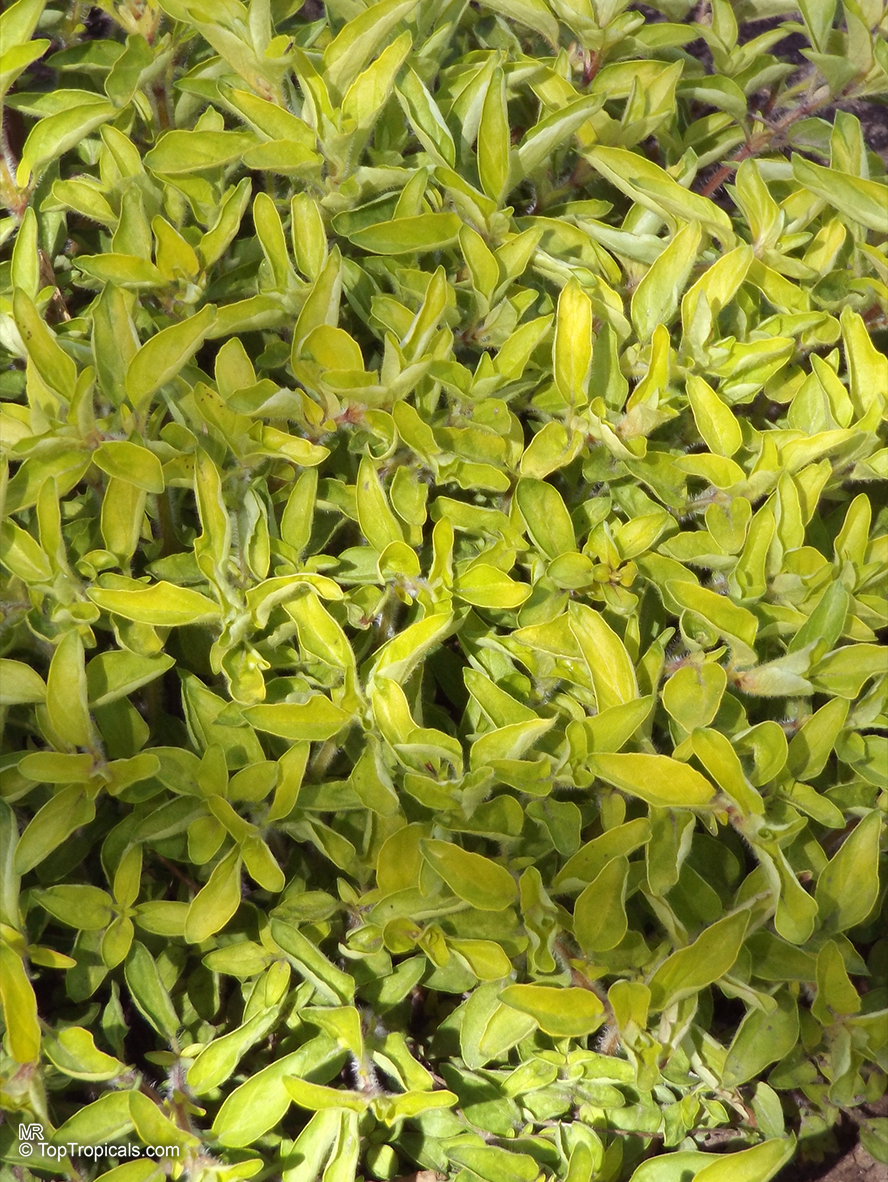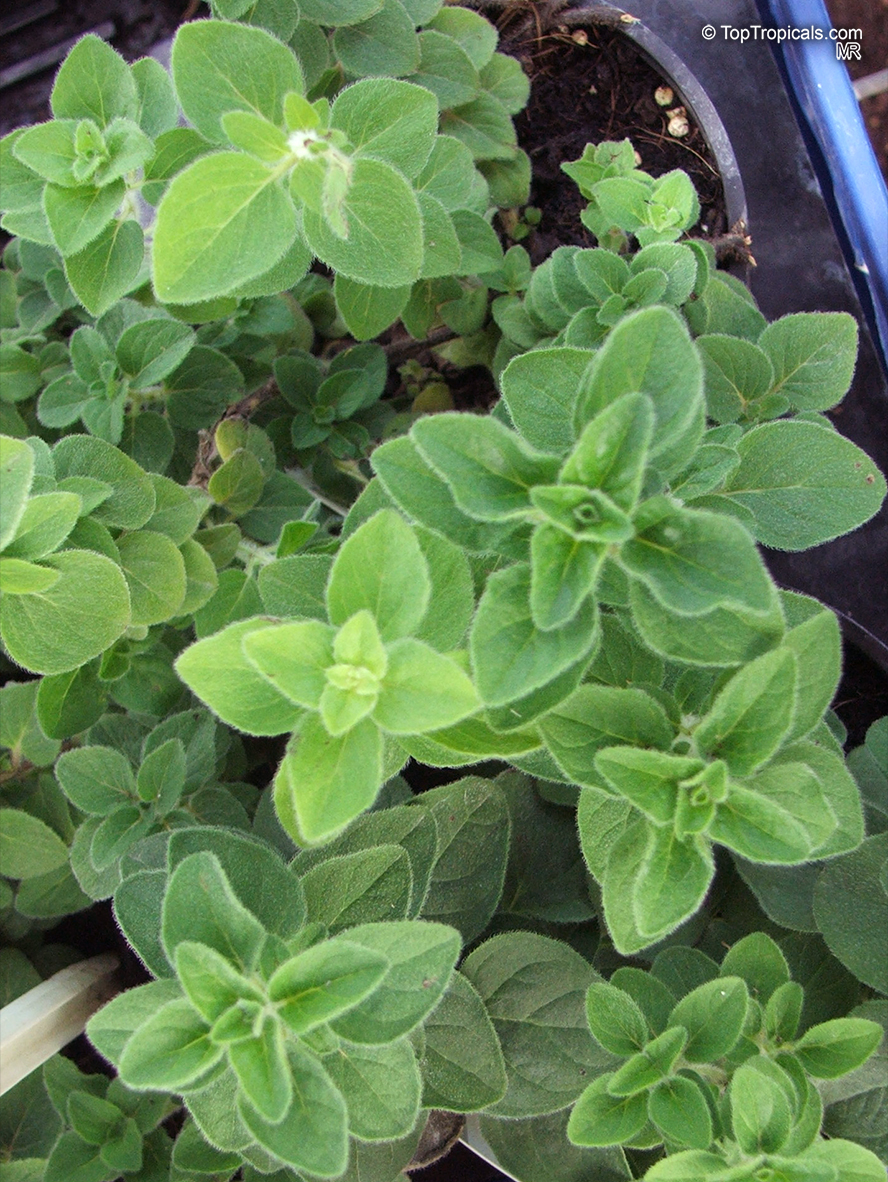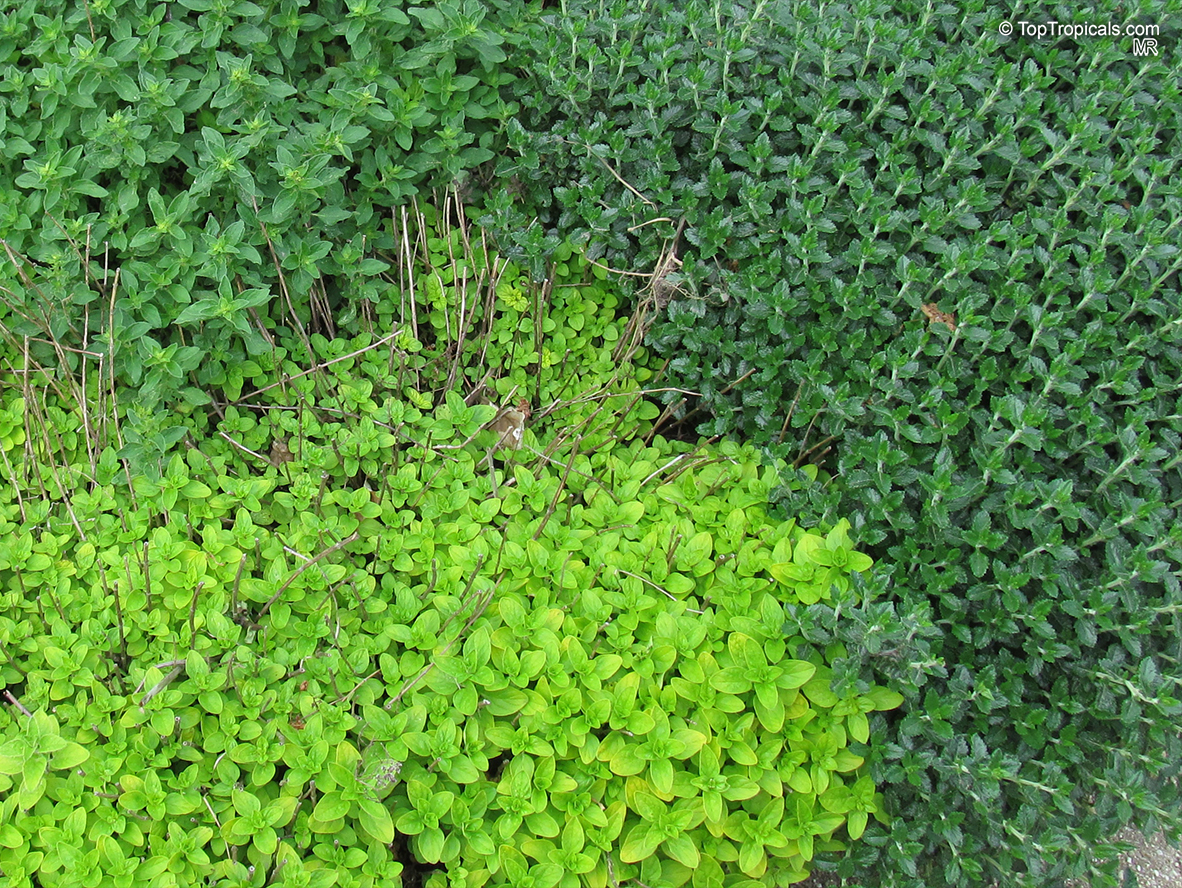Origanum - Plant Encyclopedia Results
Top Tropicals Plant Encyclopedia
| Number of plants found: 5 |
Botanical names: Majorana syriaca, Origanum Maru
Common names: Syrian Marjoram, Zaatar, Zahtar
Family: Lamiaceae
Origin: Asia Minor







In Western Asia, particularily in Jordan, Lebanon and Israel, a local marjoram relative (Majorana syriaca) is a common flavoring for grilled mutton and also used to flavor breads. This special marjoram more aromatic than the European variant and ranges in flavor somewhere between marjoram and oregano.
Botanical name: Origanum dayi
Common name: Desert Oregano
Family: Lamiaceae
Origin: Mediterranean






Origanum dayi (Desert Oregano) is a small shrub native to the Mediterranean with a charming, well-rounded habit. This perennial is ideal for full sun and reaches 2-5 feet in height and width. It does best in moderate water in dry conditions, and for slow-growing plants, it will tolerate drought better than other species.
This perennial offers exquisite white to off-white flowers and a fragrant aroma. These flowers appear from late Spring to early Summer, adding to the charm and beauty of this plant. The foliage is a vibrant green and is covered with silvery-white leaf markings, which creates a stunning display. This plant is also a great addition to landscapes, gardens and containers.
Origanum dayi is a frost-hardy perennial, and it can be grown in USDA Zones 4-9. If you live in a cold climate, it can easily be grown in a pot or container, provided it is kept in a sheltered area such as a greenhouse or cold frame. To care for this plant, water it once a week to keep the soil lightly moist. Make sure to avoid overwatering, as it may lead to root or stem rot. A balanced fertilizer should also be applied regularly throughout the growing season to ensure the plant has access to all the nutrients it needs. During Winter, make sure the plant is dormant and it should be kept dry and cool.
Origanum dayi Post is a reliable and easy-to-care-for perennial that adds a touch of fragrant beauty to any garden. Its cascading form and delicate white flowers make it ideal for any landscape. With its hardiness and potential for fast growth, this plant will be a stunning addition to any garden.
Botanical name: Origanum majorana
Common names: Sweet Marjoram, Knotted Marjoram
Family: Lamiaceae
Origin: Mediterranean






Sweet marjoram is a bushy half-hardy perennial sub-shrub that is often grown as an annual. Origanum majorana is multi-branched stems that spill over to create a mound. Since the stems take root where they touch the soil, the mound gradually increases in diameter. If grown in a hanging basket, the stems form a a cascade of attractive gray-green foliage. Sweet marjoram's oval leaves are soft and fuzzy. The leaves have a wonderful, very distinctive, perfumy fragrance when bruised. The flowers are tiny and arranged in burrlike heads. Sweet marjoram does best in a well-drained, slightly limey soil. Prefers full to nearly full sun. In the hottest part of summer, it should be given more shade. It likes a well-drained soil and frequent watering. Sweet marjoram is frost-tender. Propagation: It's easy to grow sweet marjoram from seed, but it's better to start it from cuttings. The flavor combines well in salads, in soups, sauces, fish, meats, and tomato slices. The flowers dry well for decorative arrangements or potpourri. Makes an effective home insect repellant. Often used in herbal sleep pillows. Marjoram makes a fragrant bath herb.
Botanical name: Origanum onites
Common names: Cretan Oregano, Turkish Oregano, Pot Marjoram
Family: Lamiaceae
Origin: Greece,Turkey










Very similar to the traditional Wild Marjoram. Forms a mound of leaves from which arise the reddish purple flower stems.
Botanical name: Origanum vulgare
Common names: Oregano, Wild Marjoram, Greek Oregano
Family: Lamiaceae
Origin: Mediterranean







Origanum vulgare, often referred to as Oregano, is a small fragrant plant native to the Mediterranean region that is most commonly used as a culinary herb or ethnomedical plant. Growing between 2-5 feet tall, Origanum vulgare prefers full sun and regular watering - about 1 inch per week - for optimal growth and flavor. This plant is hardy in USDA Zones 4-8, but in areas of colder climates it can be grown in a pot in a sunny, warm and sheltered location.
Origanum vulgare's distinguished flavor has made it a staple spice or herb in Mediterranean cuisine. In the kitchen, oregano can be used fresh and in dried form, and is often added to pizza, pasta sauce, and grilled vegetables. This herb also makes a unique addition to fish and poultry dishes, as well as salads and marinades.
When growing Oregano, it is important to keep in mind that it is an aggressive self-sower, and may spread quickly in ideal growing conditions. This is why it may be best to start oregano in a pot, which will also make it easier to move indoors during cold weather. Once established, oregano plants can go nearly a month without water in the summer months, but when they do need it, they prefer regular moderate water once per week.
In order to ensure a delicious and fragrant oregano harvest, maintain an even moisture level and make sure your oregano is getting enough sunlight. With tender loving care and regular water, you'll be able to enjoy a delicious oregano harvest in the warm summer months!
Use link to repeat this search:
https://toptropicals.com/cgi-bin/garden_catalog/cat.cgi?find=Origanum&search_op=and&keyword_op=and&language=e&number=10
&no_change_lang=1&user=tt&sale=1&first=0
